The Power Brokers in and Behind Your Data Center
Organizations are constantly reviewing and updating their contingency plans
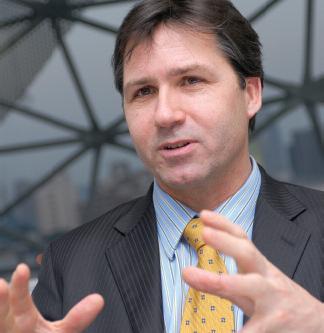
Here at PTS Consulting Japan KK 'Integrated Solutions' takes its true meaning when applied to Data Centers and Project Management. As we started to build our reputation in the Japanese market in the Data Center designs, it became quite apparent that there was a large divide between the IT and the Mechanical & Electrical (M&E) world which we saw as a big opportunity. In most cases, when a Data Center would be designed, IT would hand-off their requirements in simplistic terms to the M&E consultants and trusted that the M&E consultants would deliver an infrastructure to support their growth. Many issues have risen in the past few years, mainly due to changes of IT as well as ill-defined Data Center operational management.
Just 3 1/2 years ago, PTS decided to take the bull by the horns and offer a full DC service from design to implementation incorporating IT and M&E. It started with the appointment of a young engineer from a leading engineering firm, Mohammed Shehata, who has since helped the company grow the M&E practice to some 10 fulltime engineers. “We have now established ourselves as the one and the only one company providing an integrated IT and M&E solution and we are extremely busy keeping up with the demand,” says Alain Wenckebach, CEO of PTS. “Although some firms have been a little cautious about our service due to their internal divide between inhouse IT and the internal ‘Corporate’ service, our proven ability has entirely turned some clients around to fully embrace our tried and tested methods.”
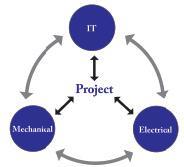
PTS exhibits a reputation of delivering quality and innovative projects. PTS’ distinctiveness in the consultancy field is the desire to excel in offering holistic solutions. This encouraged PTS to promote the ‘Integration of M&E and IT’ services. A typical project concept and strategy approach is conducted in several stages, with STARS fundamentally at the core.
The same formula is offered for Project Management. The arrival of Brian Gillespie in 2001, a construction project management veteran, brought to PTS better PM processes and it became quite apparent that our IT project management offering was underdeveloped compared to processes traditionally used in the construction industry. Whilst we knew that this would create new enemies, we decided to expand IT Project Management to cover the full range of project management services, including Construction Project Management.
Ultimately, PTS aim at a convergence of IT and Construction project management services, making our PM offering even more attractive. Some of the Project Managers are already multi-skilled and able to manage appointments in diverse areas. Our aim is to increase the multiple of skills we have and to increase the flexibility in the type of projects that our PM can successfully deliver.
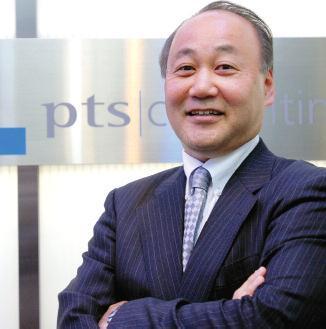
“We will not be stopping here”, says Ken Kojima, Chairman of PTS, “The Japanese operations began over 10 years ago and we are continuing to grow strong with over 130 employees based upon the demand to support multi-national companies with operations in Japan, but more importantly we have finally reached key accounts in the Japanese market”. Ken Kojima is an experienced Anglophile who returned from London to Japan and opened the first international PTS branch office in Tokyo.
PTS have recently created a Management Consultancy (MC) arm which, will enable PTS to venture into different areas, out of the traditional offerings mentioned above. As MC is usually involved in business strategy and IT alignment, the objective is for MC to be a stand alone practice outside of the other existing service areas. In this new MC service, we act not only as the 'Trusted Advisor' to a client in developing strategy and roadmaps to success, BUT we can follow onto the execution and support phases of the whole project life cycle as well. MC provides the introduction for offering Managed and Infrastructure Services. This formula has been used with great success by other major consulting firms; however, with our premium client list, expanded network and skill sets, we are starting to make a major impact on the Japanese marketplace.
The Year of the Data Center
A few years ago, the economic outlook in Japan was still grim and many large companies providing ‘Managed Services’ remained hesitant to invest in a colossal Data Center (DC). At the end of 2006, the Tokyo market started to feel the pinch, very few available Data Centers truly met requirements in terms of design and today, available space is rapidly running out.
In conjunction with the above, technology trends have pushed further the infrastructure requirements. PTS believes that 2007 is the Year of the Data Center, as clients and DC providers will have to make strategic choices in regards to their approach. Clients are thriving to maximize their non DC real estate due to a revived economy, co-locate their IT within specialized spaces, and improve on their BCP requirements. On the other hand Managed Services providers are now trying to catch up and will have to invest massively into green fields or expensive refurbishments that will have to demonstrate nothing less than a STARS T3 (click here to be taken to box below) tier requirement.
Technology impacts
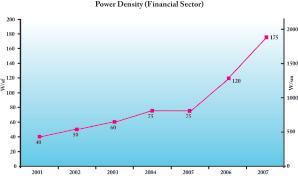
In past years the ratio of Mechanical & Electrical plants (MEP) over IT space has steadily increased. The demand for power density (watts / m2) has departed from its normal trend in around 2005 and is now taking a very steep course (see figure 1).
The conundrum of todays market
Business leaders in Japan today are confronted with solving a never ending series of issues that are critical to the success of their operations; maintaining competitive advantage against strong competition (locally and globally), increasing customer satisfaction against pressures to reduce cost while sustaining growth, and most importantly, the protection of mission critical systems hosted in your Data Center.
Companies have undergone varying degrees of ‘Business Continuity Planning’ in ensuring continued operations in protecting their critical data in the event of a disaster. Members of the Board, customers and even regulatory authorities exercise a comfort level of assurance that senior management have this under control. However, all are placing continued pressure to maintain an effective level of operational efficiency and practicality with powerful entities such as the Financial Services Agency.
Organizations are constantly reviewing and updating their contingency plans in order to ensure continued operations in the event of any climatic event. One facet of this review involves the operations and efficient use of the Data Center. The professional experts within PTS discussed with Japan Inc. their thoughts on some of the trends and factors to be aware of when approaching this issue. One potential area that is overlooked is in Data Center Optimization. Companies have backup and offsite processing facilities that provide for a level of comfort that operations will run smoothly in light of any climatic event. Given changes in technology and the massive increases in the amount of data stored, today is the appropriate time to review this comfort zone.
The MEP / IT ratio is explained by the increased demand for high Tier DC specifications whilst the later power density increase is triggered by recent technology changes. These ratios in itself explains two things: one, the customer will move MEP plant away from expensive real estate and two, DC will need to cater for high power density and as a knock-on effect, a significant rise on floor loading will force DC designers for creative solutions.
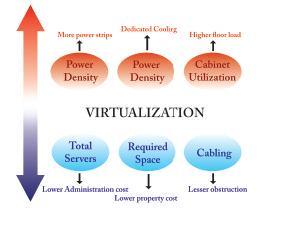
A brief summary of technology trend and impact on power is demonstrated in the table below.
The net result of this table will probably be a more optimized environment for computational density with Virtualization being the number one contender. The complex impact on the infrastructure could be depicted as in figure 2.
Management tools are still essential to manage capacities within future data centers and by embracing trends such as virtualization, effective asset management will become a possibility.
Cooling and resilience
The impact of an optimized, highdensity power and computational infrastructure has rendered traditional air-cooled cabinets inadequate. Cabinet vendors and cooling systems manufacturers are all competing to establish themselves in providing new cooling solutions.
For DC providers the main constraint of high density solutions is the lack of standards, which may not be attractive, due to limiting the competition and in turn costs. Together with pressure to invest in the construction of new buildings that will need to sustain the next 10 to 15 years, DC providers are facing significant challenges.
Another growing concern becomes the resilience of cooling and power systems. In the pre-era of virtualization almost every application is running on its dedicated server, making utilization of servers quite inefficient, although the positive aspect of this inefficiency was an intrinsic resilience among systems. With increased computational efficiency through technologies such as Virtualization, multiple virtual machines are made possible to run in a smaller space and the whole office technology such as Voice, network and servers may run in a rack, ‘virtually’. Cooling backup response time will also be paramount as the thermal rise will be much faster.
Energy efficiency
In parallel to the technology trends, other market pressures are starting to emerge, such as the abidance to the Kyoto protocol and the ‘Corporate Social Responsibility’ requirements; both call for the three ‘R’ principle, Reduce, Re-use, Recycle. As a consequence, there is an urge for DC owners or operators to analyze and monitor their operational efficiencies. A simple mathematical formula defines the efficiency as a fraction of the input power delivered to the IT load as follows:
| data centre efficiency = | IT load power total data centre input power |
The same formula has been used for a long time in the UPS efficiency where various vendors are competing and venting their efficiency factor. In a large DC, were hundreds of UPS are operating, a 1% gain on efficiency will translate into enormous savings when calculated on a year basis. DC providers should now look holistically at their DC design and quantify the total loss of energy (in heat form), all the way from the incoming utilities to the machine room and to the equipment level. Whilst the upfront capital costs are higher, the total cost of ownership (TCO) may be significantly reduced.
| Technology trend | Description | power density | computational density |
| Blades | Self computer designed for space efficiency | up to several 100% increase | up to several 100% increase |
| Virtualization | Typically servers in a DC are dedicated to a single task resulting in a low average utilization. Consolidation of multiple servers to virtual servers on one physical machine can drastically reduce power consumption due to reduced hardware. | up to 30% increase | up to 60% increase |
| Multi core / Multi processor | Dual core doubles performance as does dual processors theoretically. Not all software benefits from more than one CPU, as software development traditionally uses a single thread mentality. Multiple tasks can be run parallel without interferences, however in rare cases they may be limited due to external shared resources such as memory, hard disks or network etc. Beginning from 2007 most software will be able to use multiple threads, effectively utilizing multiple CPU‘s (see virtualization). | 10% increase per core / 50% per CPU | 80% increase per core / 80% increase per CPU |
| Grid computing | Grid computing: grids connect collections of computers which do not fully trust each other, and hence operate more like a computing utility than like a single computer. | up to 30% increase | up to 60% increase |
| Power Supply Units (PSU) changes | Typical commercial PC PSU seldom exceeds 70% efficiency. Higher efficiency is increasingly emphasized, and several groups and programs world-wide push manufacturers to use more efficient PSU in their server design. Recently manufacturers will seek to fit PSU with an efficiency of 80%-85%, resulting in an overall drop of power consumption of up to 12%. | up to 12% lower | - |
| Green servers | Savings significantly reduced as utilization increases; works best in office environments | up to 33% lower | - |
STARS© is a unique rating system - Site Tier Allocation Rating System, which utilises the Uptime Institute Tier Classification to further identify 4 intermediate classifications when carrying out a site due diligence.
STARS© aims to aid Landlords in realising their Tier Class.
STARS© creates a detailed analysis of facilities for Clients.
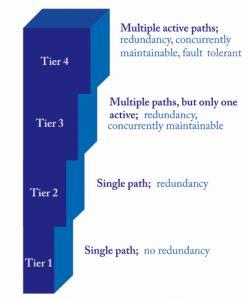
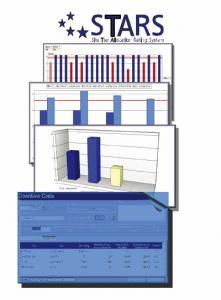
STARS© offers the following:
• Broader Tier classification scale
• Site comparison & Gap analysis
• Indicates Site potential and present limits
• Single Points of Failure (SPoF)
• Availability & Downtime Costs
• Life Cycle Costs
• Database available at PTS world-wide
• Unique Lifecycle Cost + Downtime Cost
© 2005 STARS All Rights Reserved
PTS started in London in 1983 providing IT Infrastructure solutions with a small group of forward thinking individuals. Today, PTS Consulting Group has offices throughout the globe with over 400 employees providing a wide range of services.
Contact details
PTS Logo
PTS Consulting Japan K.K.
9F Joule A Building
1-10-10 Azabu-Juban, Minato-ku
Tokyo 106-0045
Japan
Tel: +81-3-5114-8561
Fax: +81-3-5114-8562
Email: info@pts-consulting.jp
Web: www.pts-consulting.jp


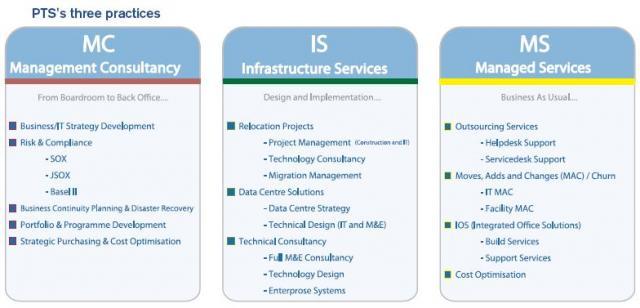




Comments
A professional (not verified)
June 30, 2008 - 17:52
Permalink
Ha ha
This article clearly illustrates the importance of two factors in journalistic writing:
!) The writer should be able to think
2) The writer should be able to speak the language being used
"The same formula has been used for a long time in the UPS efficiency where various vendors are competing and venting their efficiency factor"
'Venting' their efficiency factor ? It could be 'publishing' or 'releasing', I suppose.
Apart from the unnatural English constructions pervading the piece, there is an abundance of non-sequiturs and other flawed logic.
"Members of the Board, customers and even regulatory authorities exercise a comfort level of assurance that senior management have this under control. However, all are placing continued pressure to maintain an effective level of operational efficiency and practicality with powerful entities such as the Financial Services Agency"
So, customers are pressuring for efficiency and practicality... with the FSA ? Do they visit the FSA and make specific demands regarding my business ? And members of my board too ? Hell, those FSA guys are so friendly.
"For DC providers the main constraint of high density solutions is the lack of standards"
Really ? The main constraint then isn't the higher capital investment requirement, the increased complexity, or the physical capabilities of existing sites, but the lack of standards ?! In the first place, this is obvious guff. In the second, there are standards continually being published that cover the various aspects of site infrastructure. And this company is supposed to be expert ?
"In a large DC, were hundreds of UPS are operating, a 1% gain on efficiency will translate into enormous savings when calculated on a year basis"
Err... whether there are hundreds of UPS's or one large one, any given change in efficiency will have the same effect, for one thing. For another, any consultant who recommends such high granularity in UPS provision is creating a maintenance minefield for the future because of the increased frequency of maintenance events.
Offices *throughout* the globe ? Aah ! We're getting the view from underground ! Now I get it.